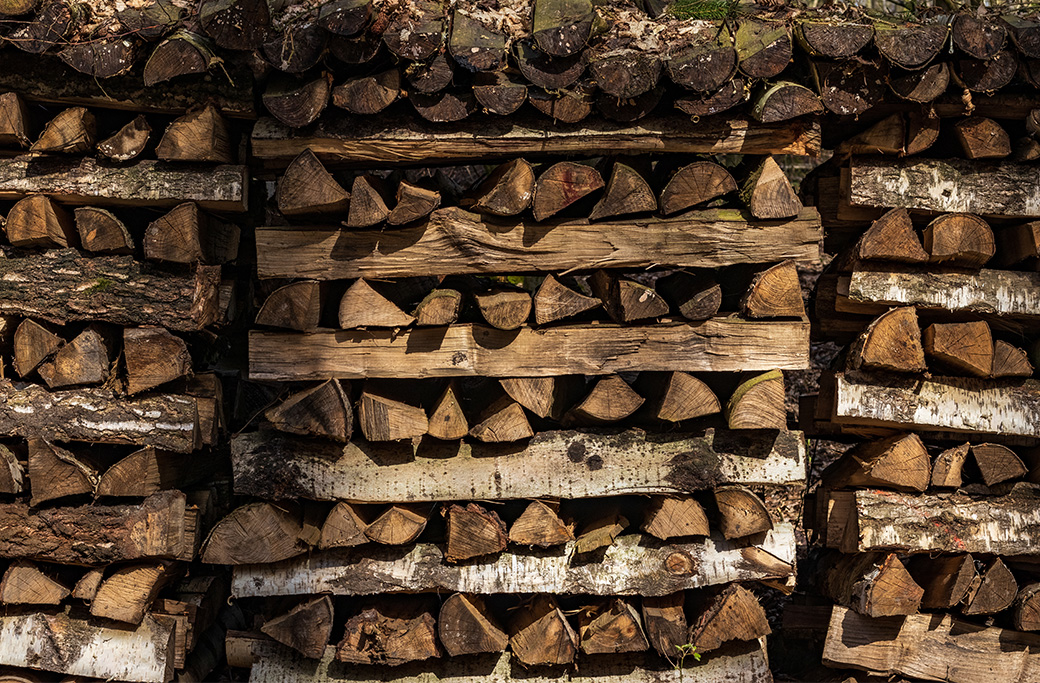Are you ready for the cozy winter nights filled with the comforting crackle of a fire? Before you light up your first log of the season, it’s essential to know that proper firewood storage is key to ensuring a warm and efficient burn. Storing firewood correctly not only prevents moisture buildup and mold but also keeps pesky insects at bay. Shannon & Sons is here to walk you through the ins and outs of firewood storage, giving you tips to stack your wood for optimal drying and protection. Whether you’re a homeowner, a DIY enthusiast, or a gardening aficionado, these insights will help you get the most out of your winter firewood supply.
Importance of Proper Firewood Storage
Proper firewood storage is more than just piling logs in your backyard. It’s about ensuring the wood remains dry, free from pests, and ready to burn efficiently when you need it most. Moisture is one of the biggest enemies of firewood. When wood is exposed to damp conditions, it can become a breeding ground for mold and fungi, making it less effective as a fuel source. Moldy wood not only burns poorly but can also release harmful spores into your home when burned.
Another concern with inadequate firewood storage is pests. Termites, ants, and rodents are naturally drawn to woodpiles, especially if they are left on the ground or not adequately covered. These pests can quickly become a nuisance in your home if they find their way indoors. Proper storage techniques help mitigate this risk, protecting both your home and your firewood investment.
By following the correct storage methods, you can extend the lifespan of your firewood, ensuring that it remains a reliable source of warmth throughout the winter months. Plus, well-stored firewood means less time spent dealing with damp or infested logs and more time enjoying the cozy atmosphere of a crackling fire.
Understanding the Basics of Firewood
Before storing firewood, it’s important to understand the type of wood you have, its seasoning process, and the ideal conditions for storage. Different types of wood have varying burning characteristics. Hardwoods like oak and maple are denser and burn longer, making them ideal for prolonged fires. Softwoods such as pine ignite quickly but burn faster, which can be useful for starting a fire.
Seasoning is the process of drying freshly cut wood to reduce its moisture content. Properly seasoned firewood has a moisture content of around 20% or less, making it burn more efficiently and cleanly. Freshly cut wood, known as “green” wood, can have a moisture content of 50% or more, leading to smoky fires and creosote buildup in chimneys. To season firewood, it needs to be cut, split, and stacked in a way that promotes air circulation and drying.
Ideal conditions for firewood storage include a dry, open space with good airflow and protection from the elements. Sunlight and wind are natural allies in the drying process, helping to reduce moisture content over time. By understanding these basics, you can set the stage for effective firewood storage that keeps your logs in prime condition for burning.
Choosing the Right Storage Location
Selecting the right location for your firewood storage is essential to maintaining its quality. Look for a spot that is sheltered from rain and snow, yet allows for adequate ventilation. A location that receives a good amount of sunlight can aid in the drying process, helping to reduce the moisture content of your wood over time.
It’s important to keep your wood off the ground to prevent moisture absorption from soil contact. Pallets or a firewood rack can be used to elevate the woodpile, promoting better airflow and reducing the risk of pests. Avoid placing your firewood directly against the exterior walls of your home, as this can invite insects and moisture into your living space.
Consider using a tarp or a dedicated firewood cover to protect the top of your woodpile from precipitation, while leaving the sides open for ventilation. This setup ensures that rainwater runs off the pile, while air can still circulate and aid in drying. By choosing the right storage location, you can preserve the quality and efficiency of your firewood.
Techniques to Stack Firewood for Optimal Airflow
Proper stacking techniques are essential for maintaining the quality of your firewood. Begin by stacking the wood in a single row with the cut ends facing outward. This arrangement allows air to move freely through the pile, promoting even drying and reducing the risk of moisture buildup.
When stacking the wood, create a stable base by placing larger, flat pieces on the bottom. This foundation provides support for the rest of the pile and helps prevent the wood from toppling over. As you stack, alternate the direction of the logs with each layer to enhance stability and airflow.
For added stability, consider building a crisscross pattern at the ends of the stack, known as a “cross-stack” or “holzhaufen” method. This technique interlocks the logs, creating a sturdy structure that can withstand wind and weather. Proper stacking techniques not only improve airflow but also make accessing your firewood easier when it’s time for a cozy fire.
Tips for Maintaining Firewood Piles
Maintaining your firewood piles throughout the year is essential for ensuring their quality and usability. Regular inspections can help you identify any issues before they become major problems. Look for signs of mold, pests, or moisture accumulation, and address these concerns promptly.
Pest prevention is an ongoing task when storing firewood. Keep an eye out for signs of termites, ants, or rodents, and take necessary measures to deter them. Natural deterrents like diatomaceous earth or cedar chips can be sprinkled around the woodpile to discourage insects. Additionally, keeping the woodpile elevated and away from your home reduces the likelihood of pest infestations.
During periods of heavy rain or snow, check your firewood covers to ensure they are secure and effective. Adjust the tarps as needed to prevent water from pooling or seeping into the woodpile. By maintaining your firewood piles with regular inspections and preventative measures, you can enjoy a ready supply of quality firewood all winter long.
Benefits of Proper Firewood Storage
The advantages of proper firewood storage extend far beyond a cozy fire on a chilly night. By taking the time to store your wood correctly, you can enjoy a more efficient burn, reduced smoke and creosote buildup, and fewer issues with pests and mold. These benefits translate to a safer and more enjoyable experience when using your fireplace or wood stove.
Proper storage techniques also contribute to the longevity and quality of your wood supply. By preventing moisture absorption and promoting even drying, you can ensure that your firewood remains a reliable source of heat throughout the winter months. Additionally, well-stored wood is easier to handle and access, making it more convenient to use.
How to Properly Store Firewood
At Shannon & Sons Tree Service, we understand the importance of proper firewood storage and management. Our team is dedicated to providing top-notch tree services and high-quality firewood delivery to meet your needs. Whether you’re looking for assistance with tree removal, pruning, or firewood supply, we’re here to help.
Don’t leave your firewood storage to chance. Contact us today to learn more about our professional services and discover how we can help you stockpile a firewood supply. Visit our website or give us a call to schedule a consultation and take the first step toward a warm and cozy winter with Shannon & Sons Tree Service.



